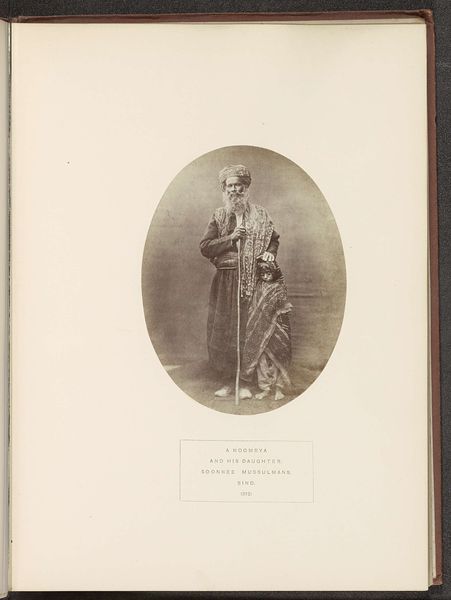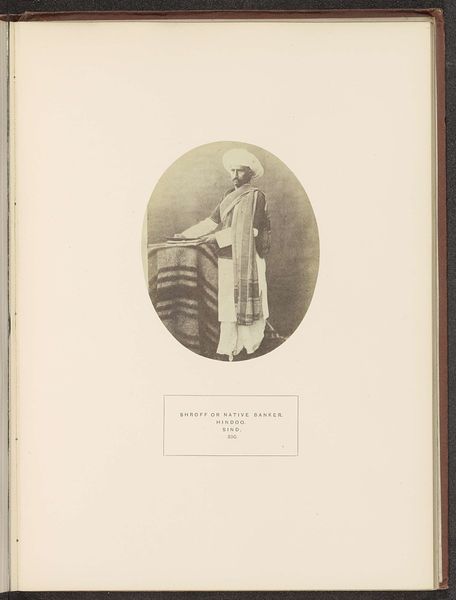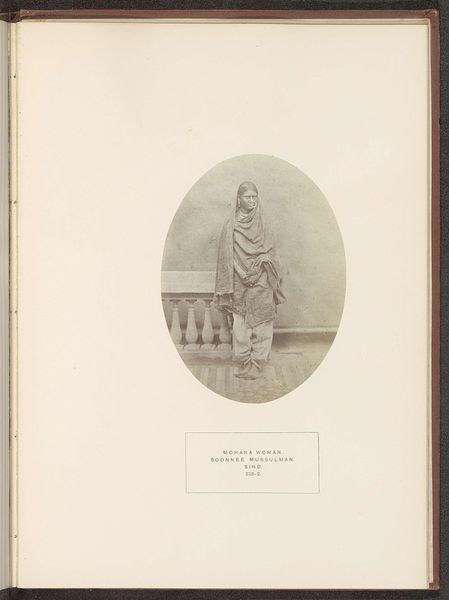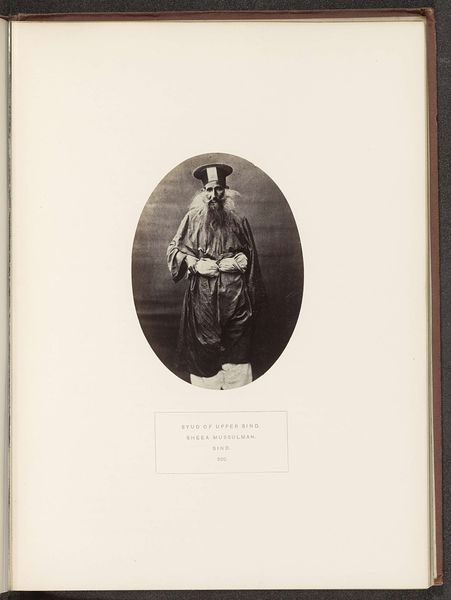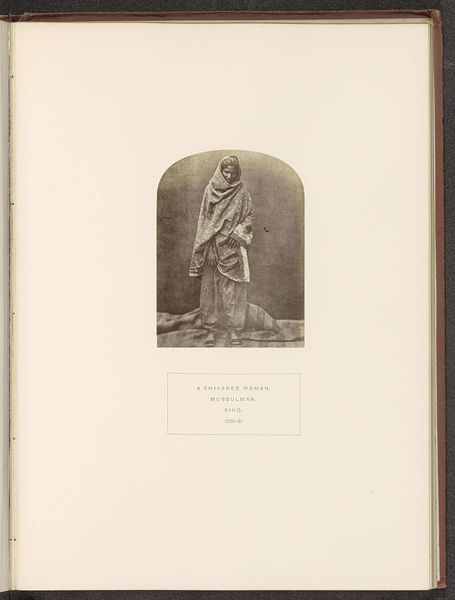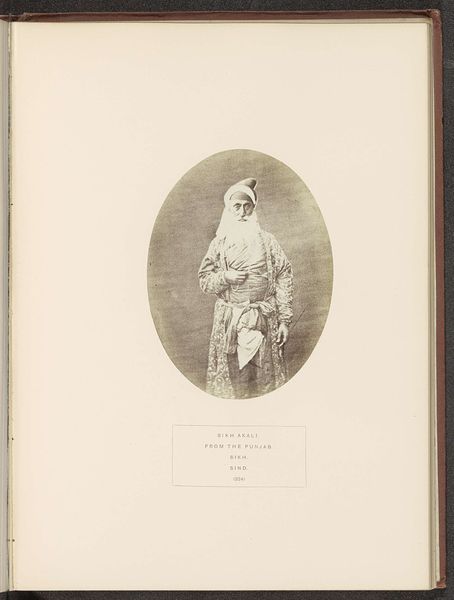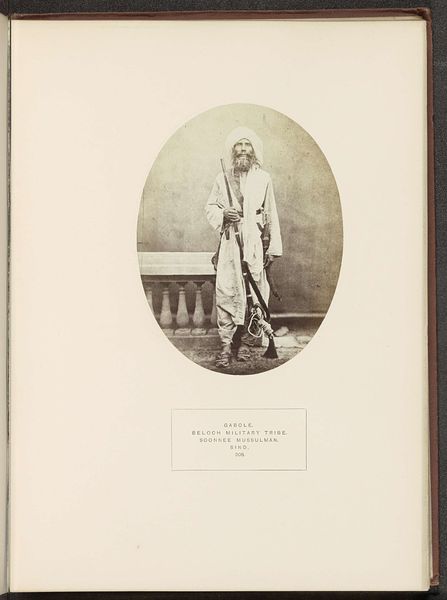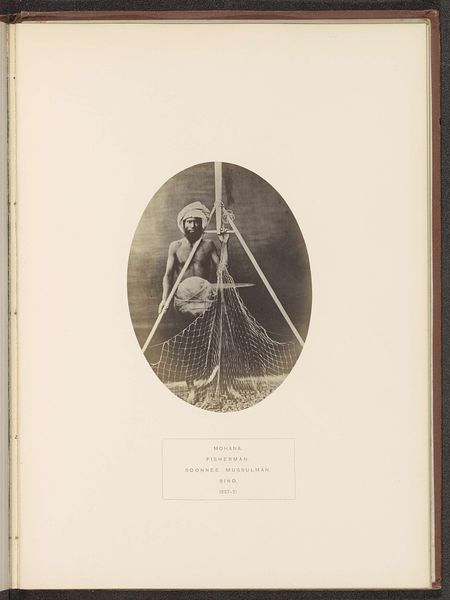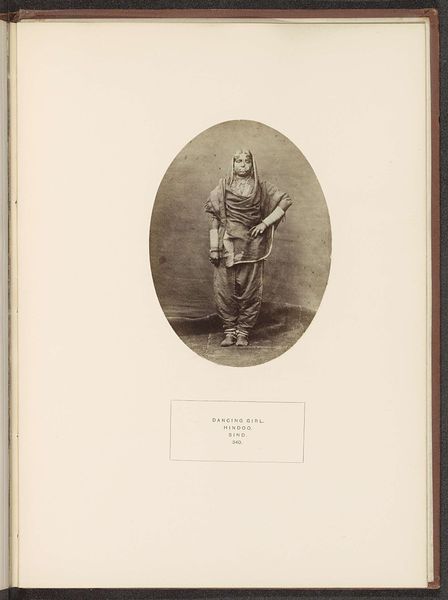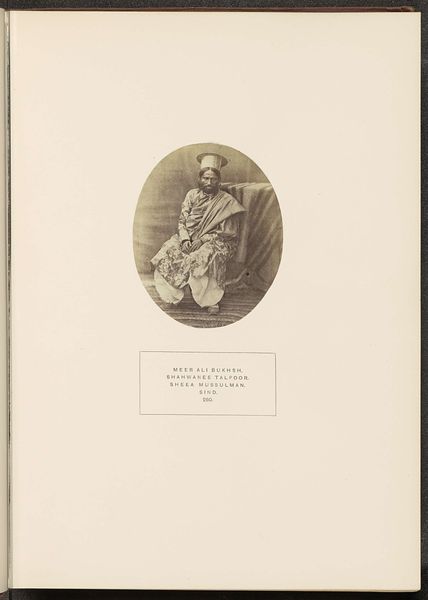
photography
#
portrait
#
african-art
#
photography
#
realism
Dimensions: height 120 mm, width 95 mm
Copyright: Rijks Museum: Open Domain
Editor: This photograph, taken by Henry Charles Baskerville Tanner before 1872, is titled "Portrait of an unknown mendicant friar in Sindh". The subject's intense gaze really draws you in. How would you interpret this work? Curator: This portrait offers a fascinating glimpse into the representation of religious figures within a specific colonial context. What strikes me is how it participates in a larger visual archive being constructed by European photographers at the time. These images often served to categorize and document populations within the British Empire. Editor: So, it’s not just a simple portrait? Curator: Precisely. Consider the staging of the subject: the traditional garb, the staff. Are these elements presented to reinforce a certain understanding of this religious order for a European audience? To what extent does the photographer's perspective shape our perception of this individual and the broader community he represents? Editor: It sounds like photography, even back then, could be used to create narratives. Curator: Exactly. This photograph can be seen as both a record and a construction, prompting us to consider the power dynamics inherent in the act of image-making. The "unknown" status of the friar further complicates this. How does anonymity influence the way we understand the individual and the wider religious context in Sindh? Editor: That's a really insightful perspective. I'll definitely look at older photos differently from now on! Curator: Indeed. Understanding the social and historical contexts framing these images allows us a deeper appreciation of art’s impact beyond aesthetics.
Comments
No comments
Be the first to comment and join the conversation on the ultimate creative platform.
